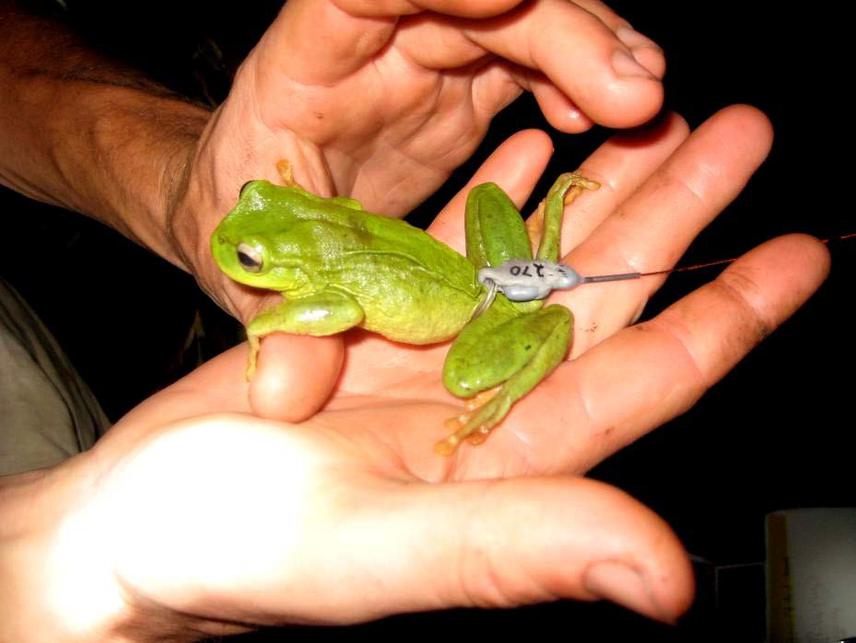Jonathan Kolby
Other projects
16 Jul 2010
Forest Canopies as Safe Havens from Amphibian Chytrid fungus, Phase II: Enigmatic Dispersal Mechanisms and Environmental Distribution
My project aims to elucidate the role of the international aquarium trade as a possible global dispersal engine for amphibian chytrid fungus (Batrachochytrium dendrobatidis). In doing so, I intend to produce results which will help slow the progression of the current global amphibian extinction crisis which is being exacerbated by this emerging infectious disease.

Plectrohyla exquisita fitted with a miniature radiotransmitter.
The amphibian chytrid fungus, Batrachochytrium dendrobatidis (Bd) is a rapidly emerging pathogen which is linked to the global decline and extinction of amphibians. Bd currently threatens the existence of nearly one third of all known amphibian species and poses one of the greatest conservation challenges of our time. Species susceptible to infection develop an often lethal condition known as chytridiomycosis. Many species have already vanished and hundreds more face imminent extinction due to this emerging infectious disease.
In 2007, I began surveying for this pathogen within Cusuco National Park, Honduras, a threatened cloud forest which is home to 14 species of endangered and critically endangered amphibians. My results established this rainforest to be the second known site of infection for the country and also showed a positive correlation between susceptible species and those reported to be experiencing enigmatic population declines by the IUCN Red List of Threatened Species. Due to these alarming results, I continued this investigation in 2008 and discovered additional endangered species to be infected.
Since Bd is a waterborne pathogen, most researchers do not consider arboreal amphibian species to be at risk as compared to those which rely upon permanent terrestrial water bodies. Regardless, in 2008 I documented Bd infection in several arboreal amphibian species in Honduras. The potential for Bd to fuel the extinction of arboreal species has not previously been considered and deserves urgent attention. To address this concern, this project will produce the first risk analysis of the threat which Bd poses to arboreal rainforest amphibians. By employing canopy access rope techniques, vertical data logger arrays will be deployed to monitor the environmental attributes which Bd would be exposed to when present in arboreal habitats. In addition, endangered arboreal amphibians will be radio-tracked and their behavioural patterns closely monitored to determine the location of diurnal retreat sites. Despite the demonstrated presence of Bd in arboreal species, this investigation will also consider the possibility that selected retreat sites may provide safe havens from Bd if such locations possess chemical and physical attributes known to impede optimal Bd growth.
Header: Jonathan Kolby and Merlin Jocque radiotracking Plectrohyla dasypus and Plectrohyla exquisita in Cusuco National Park, Honduras. © Amy Hardingham.